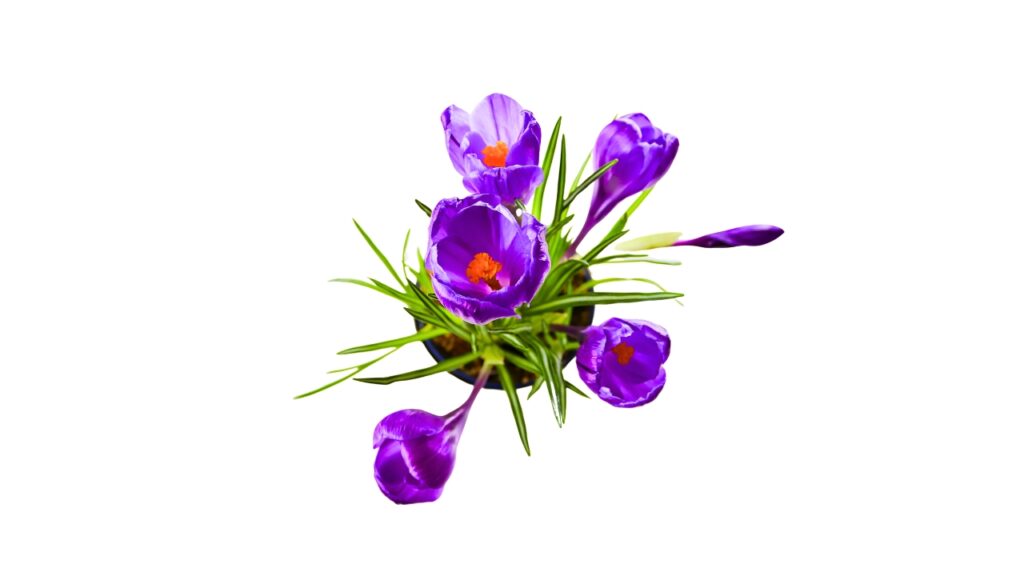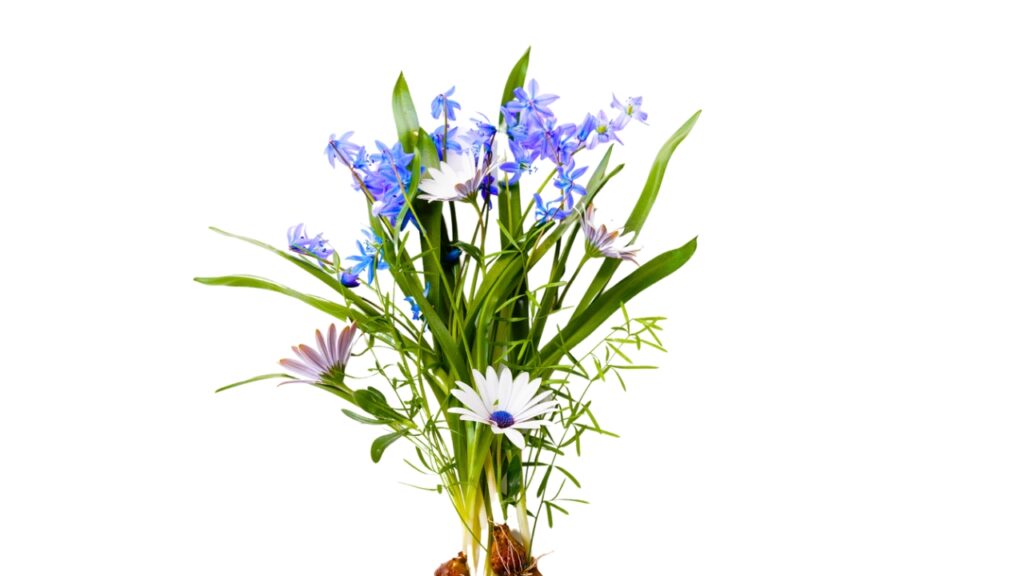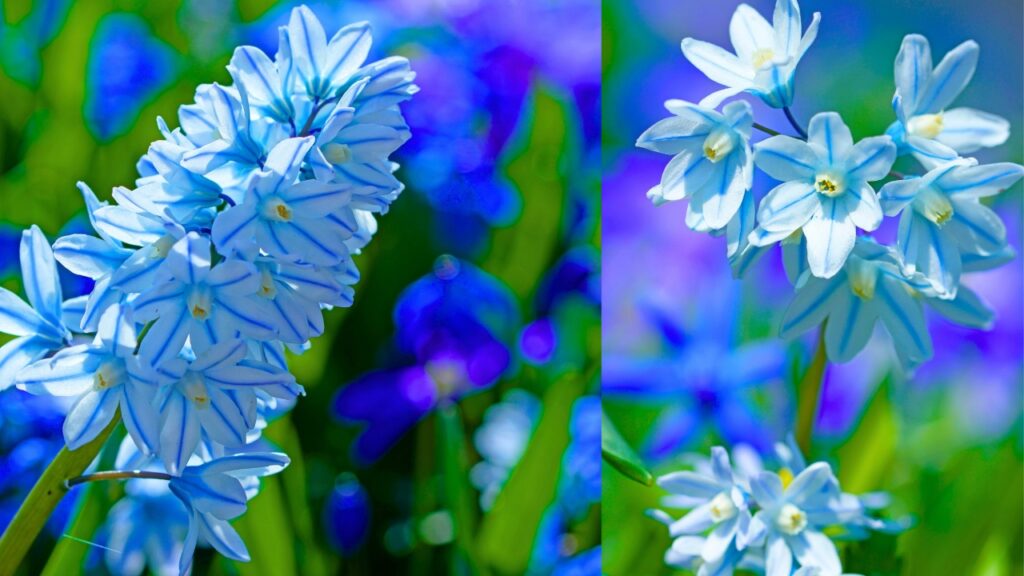At this moment, when the soft breezes of fall are blowing around the United Kingdom, it is the ideal time to begin contemplating the flowers that will grow in your garden during the springtime. It is possible to assure that your garden will come to life when warmer days approach by planting spring-flowering bulbs during the autumn season. In light of the abundance of options that are available, selecting the bulbs that will be planted can be a procedure that is both enjoyable and difficult. In order to ensure that your garden is lively and colorful, here is a comprehensive guide to the best spring-flowering bulbs that you can plant in the autumn in the United Kingdom.
1. Tulip Bulbs

Tulips are a flower that is commonly associated with the season of spring and offer an incredible variety of colors and shapes. It is best to plant tulip bulbs in the fall, preferably in the month of October, so that they have sufficient time to chill and bloom brilliantly in the spring. Make sure they are planted in soil that has good drainage and receives plenty of sunlight. As a result of their deep colors and delicate forms, Tulip varieties like “Queen of Night” and “Angelique” have the potential to lend an air of sophistication and elegance to your landscape.
2. Narcissus or Daffodil Bulbs

Daffodils, which are the most iconic spring flowers in the United Kingdom, are a sign of rebirth and fresh beginnings. In order to ensure that narcissus bulbs have adequate space to grow, it is recommended that they be planted in the autumn, specifically during the month of September or October, with a depth of 15 centimeters and a spacing of 10 centimeters between each bulb. Both the Narcissus ‘Tête-à-Tête’ variety, which is known for its delicate and compact stature, and the Narcissus ‘Dutch Master’ variety, which is known for its big and golden flowers, are favorites among farmers and gardeners. Because of the bright yellow color of their flowers, they are frequently the first to appear, signaling the arrival of the warmer months.
3. Allium Bulbs

Alliums, often known as ornamental onions, include a distinctive architectural component that may be added to any garden. They are characterized by their beautiful spherical flower heads. Allium bulbs should be planted in the fall on soil that drains well and at a depth of around 10–15 centimeters. Both the Allium ‘Purple Sensation’ and the Allium ‘Globemaster’ are popular kinds. The former has purple globes that are more eye-catching than the latter, and the latter has flowers that are larger than life. These flowers are not only appealing to people, but they are also appealing to bees, which makes them a good choice for gardens that are friendly to pollinators.
4. Crocus Bulbs

The crocus is one of the earliest flowers to bloom in the United Kingdom, and it can frequently be seen peeping through the snow. In order to get a more organic appearance, it is recommended to place these small flowers in drifts. Ideally, crocus bulbs should be planted in soil that drains well, approximately 10 centimeters deep, and 5-7 centimeters apart. During the final few days of winter, varieties of crocus such as ‘Ruby Giant’ and ‘Jeanne d’Arc’ are noted for their vibrant colors, which have the ability to lighten up the days that are otherwise boring.
5. Hyacinth Bulbs

Both the seductive scent and the dense spikes of blooms that hyacinths produce have earned them widespread acclaim. It is best to plant hyacinth bulbs in autumn, with a depth of approximately 10-15 centimeters and a spacing of 10 centimeters between each bulb. There is a gorgeous range of blues, pinks, and whites that can be found in Hyacinth varieties such as ‘Blue Star’ and ‘Pink Pearl’. These varieties are able to fill the air with their lovely perfume.
6. Fritillaria Bulbs

Fritillarias are particularly well-known for their bell-shaped flowers, which are known to be exotic and offer a touch of the odd to your spring garden. Plant fritillaria bulbs in the United Kingdom in a location that is either partially shaded or sunny, with soil that drains well, and at a depth of approximately 10 to 20 centimeters, depending on the type. This is especially true of the spectacular crown imperials and the attractive snake’s head fritillaries, both of which are extremely popular due to their distinctive features.
7. Bulb Muscari

The muscari, which are also known as grape hyacinths, are distinguished by the clusters of small, blue flowers that are shaped like urns. Muscari bulbs should be planted in autumn, with a depth of around 10 centimeters and a spacing of 5 centimeters between each bulb. As a result of its ability to produce a sea of blue blooms, Muscari armeniacum is frequently utilized for the purpose of edging borders or helping to cover gaps between larger plants.
8. Bulb Camassia

Camassias, sometimes known as wild hyacinths, are indigenous to North America; nevertheless, because of their star-shaped blossoms and strong vertical presence, they have found a particularly devoted home in gardens in the United Kingdom. Plant Camassia bulbs in the fall in soil that is moist and rich, approximately 10 centimeters deep, and 10-15 centimeters apart. It is possible to lend an air of refined elegance to your landscape by cultivating varieties such as Camassia leichtlinii, which have tall spikes of flowers that are either blue, white, or purple.
9. Anemones Bulb

Anemones, which are frequently known as windflowers, are particularly prized for the vivid colors and daisy-like blooms that they produce. When autumn arrives, plant anemone bulbs in soil that drains well, about 5 centimeters deep, and 15-20 centimeters apart. Creating a carpet of color in your garden can be accomplished by using varieties such as Anemone blanda and Anemone coronaria. These varieties can add a splash of blue, pink, and red hues to huge areas of your garden.
10. Ranunculus Bulbs

Ranunculus, which are also referred to as Persian buttercups, are renowned for the layers of paper-thin petals that they possess, which resemble small roses for their appearance. Ranunculus bulbs should be planted in autumn in soil that drains well, approximately 5 centimeters deep, and 10-15 centimeters apart from one another. You may achieve a colorful, almost artistic appearance in your garden beds or containers by using popular types that come in a variety of colors, such as reds, pinks, and yellows.
11. Scilla Bulbs

Scilla, which is more generally referred to as squill, is a component of the spring flower show that is both modest and powerful. In October, plant Scilla bulbs in soil that drains well, approximately 10 centimeters deep, and 5 to 10 centimeters apart. Species such as Scilla siberica and Scilla peruviana have clusters of star-shaped flowers that are either blue or purple in color, signaling the arrival of spring. When it comes to naturalizing in the United Kingdom, they are perfect for planting on lawns and under trees, where their early blossoms can have a remarkable impact on the landscape.
12. Eranthis Bulbs

The winter aconites, also known as eranthis, are among the earliest bloomers, and they frequently appear as early as the late winter months. In the autumn, these beautiful, yellow blooms that resemble poppy blossoms can be planted in locations that are slightly shaded and have good drainage. About 5 centimeters deep and 5 centimeters apart, plant the Eranthis bulbs. Some varieties, such as Eranthis hyemalis, are particularly well-liked because they are capable of producing a golden carpet that can provide a ray of sunshine to winter days that are otherwise gloomy and chilly. Their brilliant yellow flowers are a sight to behold, and they frequently serve as the initial indication that spring is on the verge of arriving.
13. Puschkinia Light Bulbs

The Puschkinia, which is also known as Russian snowdrops or striped squill, is a plant that produces clusters of delicate flowers that are pale blue in color and striped with darker blue lines. These flowers offer a touch of soft elegance to your landscape. In the autumn, plant Puschkinia bulbs in soil that drains well, approximately 10 centimeters deep, and 5 to 10 centimeters apart. One of the most well-liked options is the Puschkinia libanotica type, which is well-known for its gorgeous, starry blossoms and its capacity to naturalize effectively, resulting in delightful drifts of blue and white.
Summary
When you plant these spring-flowering bulbs in the autumn, you are laying the groundwork for a spectacular display of flower bulbs in the United Kingdom that will come to life as soon as the first signs of spring appear. It is possible to construct a wide variety of colorful garden themes by utilizing these bulbs, each of which possesses its own special allure. There are a variety of bulbs available to cater to the preferences of every gardener, ranging from the sophisticated tulips and the cherry daffodils to the exotic fritillaries and the delicate puschkinias.
Be sure to remember to follow general principles while planting bulbs, such as making sure the soil is well-drained, planting them at the suitable depth, and spacing them out adequately. Utilizing a bulb compost of high quality can help improve the quality of the growth and blooming of the bulb. After planting the bulbs, make sure to give them plenty of water, and then cover them with a layer of mulch to provide insulation throughout the winter months.
When planning and planting your autumn bulbs, it is important to take into consideration not only the colors and sizes of the flowers, but also the dates at which they bloom. You will be able to take pleasure in a continuous display of beauty that develops throughout the season if you choose a choice of early, mid, and late spring flowering bulbs. This will increase the likelihood that something fresh and gorgeous will constantly be in bloom.
Among the spring-flowering bulbs that are ideal for planting in the autumn in the United Kingdom are the following:
The great variety of hues and shapes that can be found in tulip bulbs;
Bulbs of daffodils, which are cheery and colorful and bloom early in the spring;
The spherical blossoms of allium bulbs, which contribute to the architectural grandeur of the structure;
Bulbs of crocus, which are typically the first to bloom, are little but brilliant.
The fragrant and thick flower spikes of hyacinth bulbs, which are famous for their scent;
Fritillaria bulbs, which are bell-shaped flowers that are exotic and unusual;
Muscari bulbs, which are characterized by an abundance of blue flowers;
Camassia bulbs are spectacular flowers that are fashioned like stars and have tall spikes;
The vivid, daisy-like flowers of anemone bulbs, which have the ability to form a colorful carpet;
Ranunculus bulbs are flowers that resemble roses and have several petals. They come in a brilliant array of colors.
Scilla bulbs are extremely little, star-shaped flowers that are perfect for naturalization.
Eranthis bulbs, which blossom early and add a touch of gold to the late winter season;
Puschkinia bulbs are flowers that have a light blue color with subtle stripes that complement the elegance of your landscape.
The selection and planting of flower bulbs in the United Kingdom throughout the autumn months will result in a garden that is brimming with vitality, color, and happiness when spring arrives. We wish you a lovely and flourishing garden, and we wish you a happy planting!

